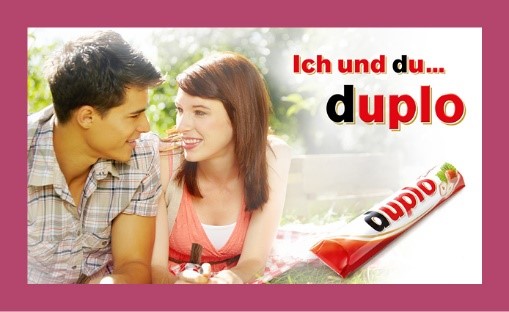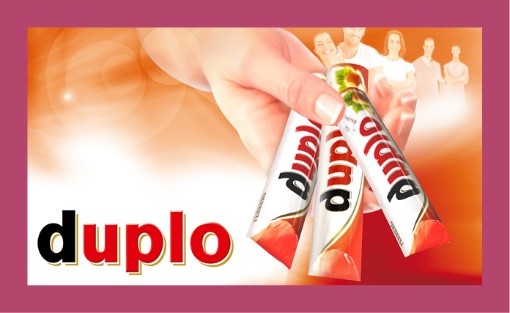In part one, we learned that communication that evokes an emotional response can help both its ease of processing and its memorability. However, this leaves a quandary that some emotional ads sell, whilst others do not. To understand this, let’s now consider decision-making.
Whilst there may be exceptional occasions when we react in a heightened state of emotion, such as hooting a car horn in annoyance, the vast majority of the multitude of decisions we make on a daily basis, e.g. getting dressed, having a coffee, are conducted at a routine level with very low associated arousal.
In fact, emotions generally do not cause behaviour - There is a link between emotion and behaviour, but any correlation must not be mixed up with causality.
This is very counterintuitive, so let us have a deeper look at the science here.
Renowned psychologist Professor Roy Baumeister and his team at Florida State University have evaluated more than 3,000 scientific papers dealing with the question of ‘do emotions determine behaviour?’
The result was astonishing and certainly challenges the prevailing view: there is almost no indication in this vast body of scientific literature of a causal relationship between emotion and behaviour, except in extreme cases.
He states that “emotion is stimulated by actions and outcomes” and, in another paper, that “emotions [are] a feedback system whose influence on behaviour is typically indirect [by] providing feedback and stimulating retrospective appraisal of actions [to] alter guidelines for future behaviour”.
Emotions are a result of our actions – not the other way around. They provide feedback on whether we are on the right track or not.
But how does that fit with the insight that most decisions are determined by System 1? Doesn’t the work of Kahneman prove that everything is about emotion? No. The notion that ‘System 1 = Emotion’ is an inappropriate oversimplification and misses the point. Take one example: driving a car. In our first driving lesson, we had to think about and control everything that we did. It was exhausting, took a lot of effort and we were slow.
We were using our System 2, because we had not yet developed intuition.
Nowadays, we do most of our driving without thinking. But do we drive based on emotion? Hopefully not. Our decisions today are based on intuition.
This is what System 1 is about:
intuitive, automatic, effortless and fast decision-making based on associative processes. System 1 includes affective and cognitive aspects and tasks (Camerer et al 2005). Another common misunderstanding is that Professor Gerald Zaltman stated that ‘95% of our decisions are based on emotion’. He actually stated that ‘95% of thinking takes place in our unconscious minds’ (Zaltman 2003). Mixing up intuitive, implicit, unconscious processes with emotion is just wrong.
You might also have heard about ‘Elliott’, the famous patient of Professor Antonio Damasio. This patient suffered from a trauma in the frontal lobe, damaging an area called the OFC (orbito-frontal cortex), and this damage made it impossible for him to make decisions, though he could still experience emotions.
As Damasio said, “The machinery for his decision making was so flawed that he could no longer be an effective social being.” (Damasio, 1994).
Damasio’s main concept is ‘somatic markers’. He used skin conductance during a gambling task as a measurement of somatic markers – hence he measured arousal. According to Damasio, these somatic markers are hypothesised as positive or negative input signals to decision-making. Damasio’s hypothesis has been interpreted by many as meaning that emotion is the basis of all decision-making. However, Damasio himself later conceded, that “We caution against the idea that emotion-based signals ‘decide’ for us, other than in extreme situations”. (Nature Neuroscience 2002)
So, to conclude, emotional communication helps to make communication more effective as a vehicle to ensure processing of the content of an ad, but the emotional response when watching the ad as such does not drive the purchase decision, because emotions generally do not cause decisions and choice.
Let’s now have a deeper look at what drives choice and what the role of emotions in decision-making really is. A recent study (St. Gallen Review 2018) provides concrete findings on how consumers make purchase decisions. The researchers wanted to understand which brain systems correspond with actual sales. The following visuals were used in-store and sales were measured:


Visual A Visual B
Which visual triggered more sales?
Applying the notion of emotion, we might choose the one showing the couple. In fact, visual B triggered the highest sales in store.
Why? Brain scans showed that the brain region that explained sales is the same part of the brain that was damaged in Damasio’s patient Elliot and rendered him unable to make decisions: the OFC.
Further research into this area and its function shows us what actually drives brand choice. In a nutshell, this system assigns value to choices based on our current goals and needs, which is why the activation of this region determines choice, sales and willingness to pay.
So how does that work?
![]()
Behaviour is driven by the expected value of a choice.
In very general terms, this value is a function of the experienced or expected discrepancy between our actual (current) state and our desired (target) state. This discrepancy is what makes us do things, this is what motivates us.
If you feel hungry, you will start searching for food. It is the discrepancy from our desired state (goals) that determines the value of choices. You might love doughnuts, but you may have gained weight over the years and this state increases the discrepancy with your desired goal state of self-esteem and feeling attractive. So you are motivated to go on a diet and hence the reward system will assign a lower value to the doughnut. Once you have lost weight, your goal of feeling attractive is achieved, and so your goal of losing weight is deactivated because there is no discrepancy anymore.
At this point the doughnut gets a higher value again (unfortunately).
Motivation – unlike emotion – always has a target component, an outcome that we want to achieve.
Behaviour in general, and consumer behaviour in particular, is ‘goal directed behaviour’ – we purchase brands and products to achieve the desired state, goals, needs or jobs to be done. It is motivation that actually determines what we purchase. Because it assigns value based on how rewarding the brain expects this choice to be, this system is referred to as the reward system and it is the core of motivation.
And this value expectation is based on the associations that we build with the choice over time.
This explains why, in the Duplo example above, visual B sold more. In this case the distinctive reward of the brand is ‘sharing’ which is communicated more strongly in visual B. These motivating discrepancies between desired and actual state might be very basic (hunger), utilitarian (get from A to B), hedonistic (treat yourself with something sweet), social (get recognition) or to change our mood (pamper oneself with something warm).
But a note of caution: the motivation to change our mood must not be confused with the emotional response to an ad.
This differentiation is important because it forces us to distinguish between, on one hand, the emotional responseevoked by an ad and, on the other, the message/value proposition of the brand as a means to reduce an expected or experienced discrepancy. Communication needs to dramatize that the brand is an effective means to close this gap, achieve the desired outcome, goal and job to be done – whether it be it on a functional, social or mood level.
So, motivation is what makes us do things – not emotion. We choose the option with the highest goal value.
The value is high if our product and brands are perceived to be an effective means to close the experienced or expected discrepancy between what we want to do, have, be or become – our goals – and our actual state.
So where does emotion fit in decision-making? This, together with a practical demonstration of how we can use this new understanding, will be our focus for the final part of this article.
By Phil Barden, managing director, DECODE marketing ltd




